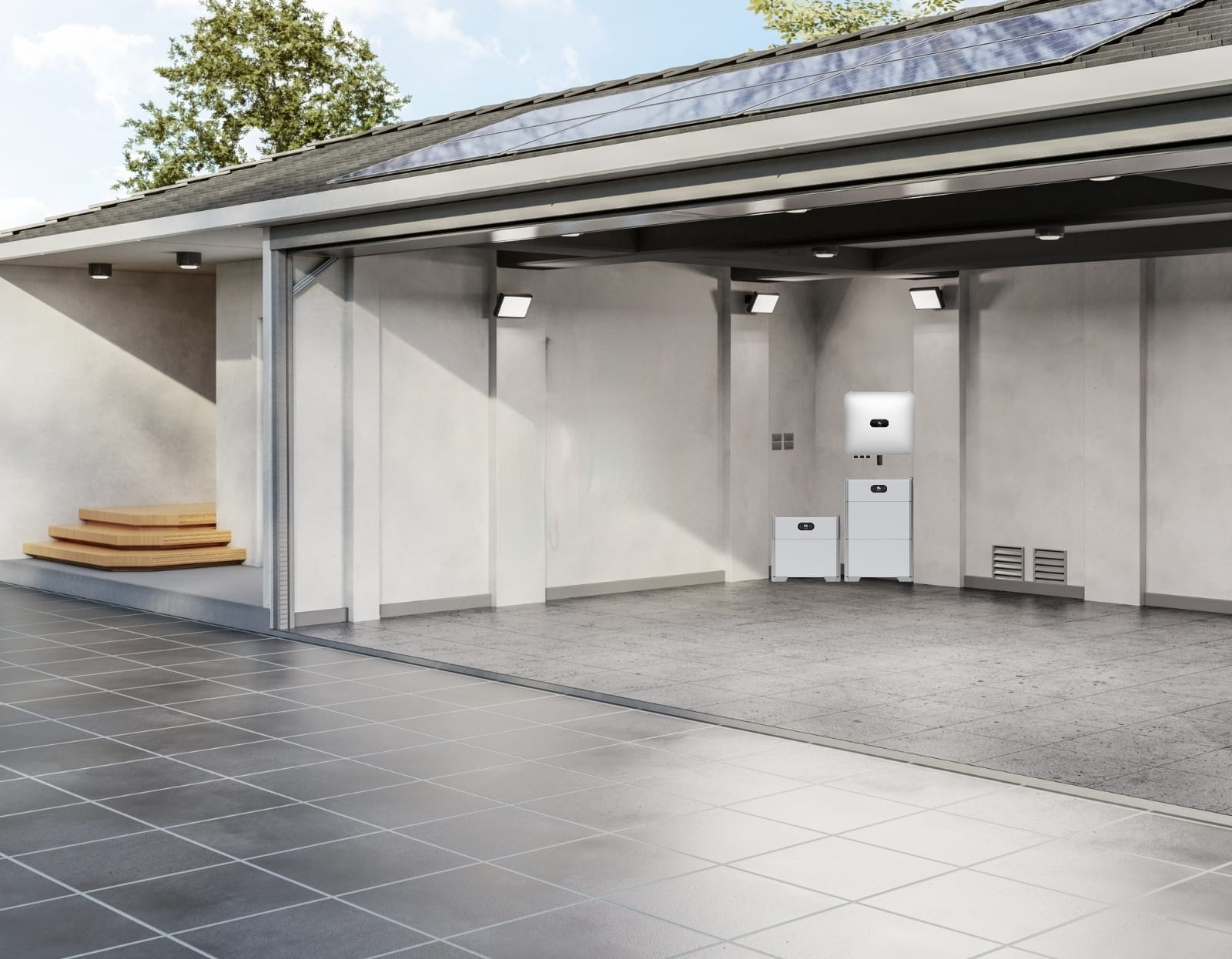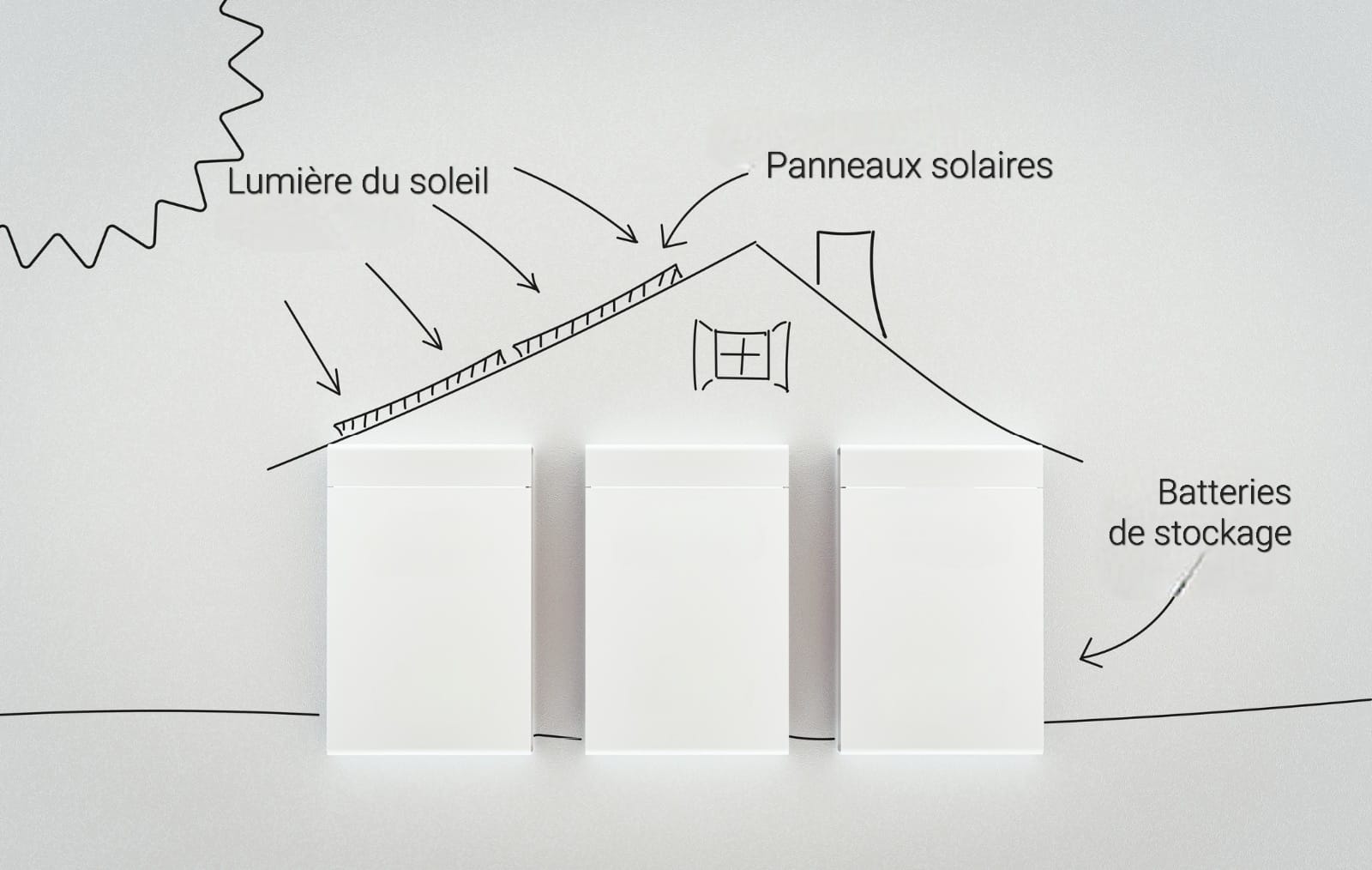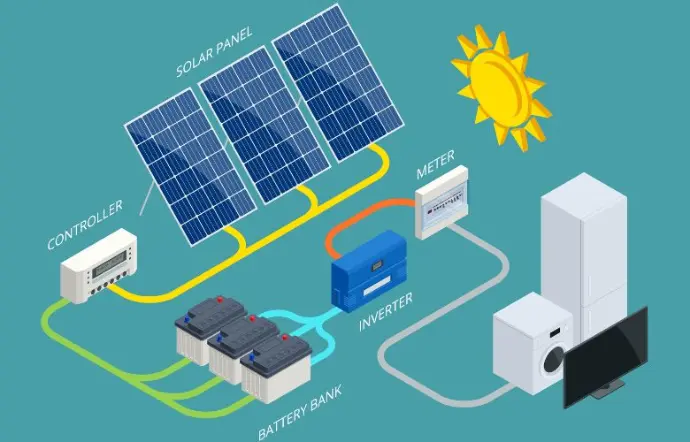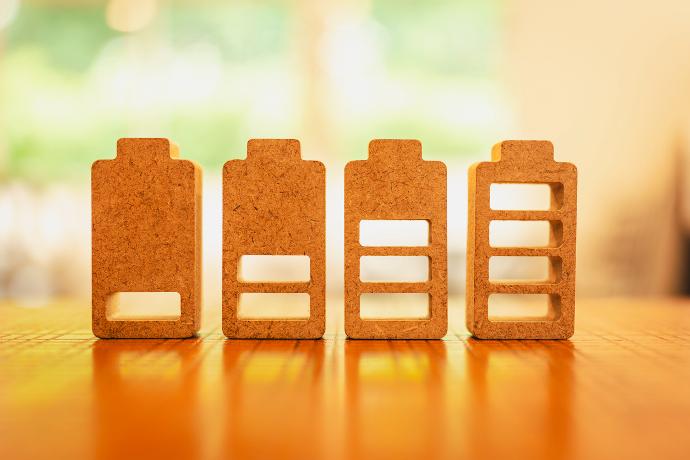Combinez installation photovoltaïque
et batterie de stockage
Most households consume electricity mainly in the early morning or in the evening after working hours, when solar panels produce the least.
With the exception of weekends and teleworking days, a large part of the electricity produced by your photovoltaic panels is fed back into the electricity grid.
Thanks to the storage battery, you can store the electricity produced by your solar panels for later use, whenever you need it.

Combinez installation photovoltaïque et batterie de stockage
Most households consume electricity mainly in the early morning or in the evening after working hours, when solar panels produce the least.
With the exception of weekends and teleworking days, a large part of the electricity produced by your photovoltaic panels is fed back into the electricity grid.
Thanks to the storage battery, you can store the electricity produced by your solar panels for later use, whenever you need it.

Our best-seller

Huawei Luna2000-5/10/15-SO
The perfect alliance between your photovoltaic installation and the storage of your energy production. An intelligent, high-performance system that's easy to install.

Caractéristiques de la batterie Huawei Luna2000
- Designed to extend its storage capacity with modules (5/10/15 kWh)
- Safety and optimum lifespan thanks to lithium-iron-phosphate cells (LiFePO4)
- 10 years warranty
- L670xH360xD150mm
- High voltage
- 50 kg
- High depth of discharge
Thousands are using batteries to further reduce their electricity bill
What are you waiting for?

How does a storage battery works?
The battery stores the excess energy produced when your solar panels generate more electricity than you need immediately, creating an energy reserve for future use.
During periods when there is no sunlight, such as evenings or nights, the battery will release the stored electricity to power your home..
By storing energy, the storage battery reduces your dependence on the traditional electricity grid, giving you greater energy autonomy and greater savings on your bills.

How does a storage battery works?
The battery stores the excess energy produced when your solar panels generate more electricity than you need immediately, creating an energy reserve for future use.
During periods when there is no sunlight, such as evenings or nights, the battery will release the stored electricity to power your home..
By storing energy, the storage battery reduces your dependence on the traditional electricity grid, giving you greater energy autonomy and greater savings on your bills.

Boost your self-consumption with a battery
Since solar panels produce electricity during the day, mainly when you're away, on average almost 65% of your photovoltaic output goes back to the grid.
Grâce au stockage de votre production d'électricité dans une batterie, vous pourrez obtenir un taux d'autoconsommation allant jusqu'à 75% !
Back-up in the event of a power cut
The storage battery can also be combined with a back-up module designed to supply electricity in the event of a power cut.
This module will allow the battery to operate for a few hours independently of the electricity network in the event of a power cut.

Frequently asked questions
In theory, it's possible, with a few simple manual configurations. However, we strongly advise against it, for several reasons. Firstly, if your battery is charged at night, it will obviously not be charged again during the day, thanks to solar energy, which is completely free. Secondly, some of the electricity stored in the battery is always lost when the stored direct current is converted into usable alternating current. So what you'll 'gain' in terms of pennies by charging your battery at night will be minimal, and probably even almost non-existent.
Yes, a storage battery does take up space. The amount of space required depends on a number of factors, including the storage capacity of the battery, its technology (e.g. lithium-ion, lead-acid, etc.), and its application (domestic, industrial use, or for larger energy installations). Batteries for domestic applications, such as those used to store solar energy, can often be wall-mounted or floor-standing, and can range in size from a small device that can fit in a cupboard to larger systems that require a dedicated space.
The life of a storage battery depends on many factors, including the type of battery technology, conditions of use and how well the battery system is managed. Lithium-ion batteries, commonly used in residential applications and offered by Neopower, have a high energy density and an estimated average life of between 10 and 15 years, although some may last longer depending on use and management.
The number of complete charge-discharge cycles that the battery can support before its capacity significantly decreases (usually to 80% of its original capacity) is often used to assess its life and is generally between 5,000 and 8,000 cycles, depending on the quality and specific type of lithium-ion battery.



